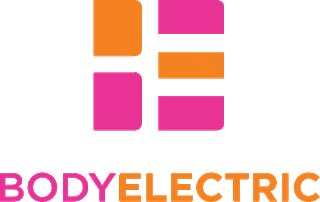See what really puts your health at risk
Aging may well be a risk factor for diseases such as Alzheimer’s, diabetes, and osteoporosis, but it is not the cause. According to Dr. Robert Butler, an internationally recognized leader in gerontology and geriatrics, “healthy aging” is shaped by social and behavioral factors, and adequate nutrition, rather than genetics.
The number of people over 65 will double by the year 2030. Age management, a new trend in scientifically research-based medical care, shifts the focus from disease treatment to more proactive disease prevention. The key issue, though, is not the undeniable fact that our bodies do age, but, rather, how they age. Even minor lifestyle changes have a dynamic effect on the quality of our lives.
Decline and disability are not normal consequences of advanced age.
Medical experts say inactivity poses as great a health risk as smoking, contributing to heart disease, diabetes, hypertension, cancer, depression, arthritis and osteoporosis. Even lean men and women who are inactive are at higher risk of death and disease.
Being fit is one of the most important things you can do to ensure healthy aging. Regular exercise also helps to combat the ongoing damage done to cells, tissues and organs by chronic conditions such as elevated blood pressure and cholesterol, and the increasing incidence of Type 2 diabetes.
Get with the Program
Aerobic exercise provides health benefits to the heart, lungs and circulation. The American Heart Association recommends performing aerobic activity, such as brisk walking, for at least 30 minutes on most days. (You can also accumulate 30 minutes in 10 or 15-minute sessions.)
Muscle-toning exercise strengthens your muscles and bones. Exercise each muscle group for 3 ½ minutes every third day. So, if you exercise your upper body on Monday, you should work the same muscles again by Thursday. You may exercise a muscle on consecutive days provided that there is no soreness. Important caveat: continually challenge your muscles with heavier hand-held weights only if you can do so without compromising correct form.
Eat right
Eating a healthy diet is vitally important in maintaining lean muscle and reducing body fat. Joel Fuhrman, M.D., the best-selling author of “Eat to Live,” writes that raw vegetables and fresh fruits provide protection against cancer and osteoporosis (researchers found that those who eat the most fruits and vegetables have denser bones).
For optimum health and longevity, concentrate on foods that pack the most nutrients per calorie. And, by using meat as a condiment rather than the main course, you can afford more organic, and healthier, free-range products.
It’s not aging that slows you down. It’s the decisions you make and the lifestyle you lead that determine the quality of your life, no matter what age. So make a decision now to enjoy self-sufficiency, youthful vitality, and creativity for the time of your life.
Resources to get started
You may request (at no charge) Exercise & Physical Activity: Your Everyday Guide from The National Institute on Aging by calling 800-222-2225 (toll-free), or online at http://www.nia.nih.gov/
As the producer and host of Body Electric TV, which has aired nationally on PBS television since 1985, and author of the book, BODY ELECTRIC: Strong, Toned and Sexy in Just Three Hours A Week (McGraw-Hill; May, 2008), my mission is to inspire millions of Baby Boomers to maintain their fitness and youthful energy. The Body Electric program offers effective, safe, and enjoyable exercises that are powerful on the muscles and gentle on the joints.

Share This Blog

